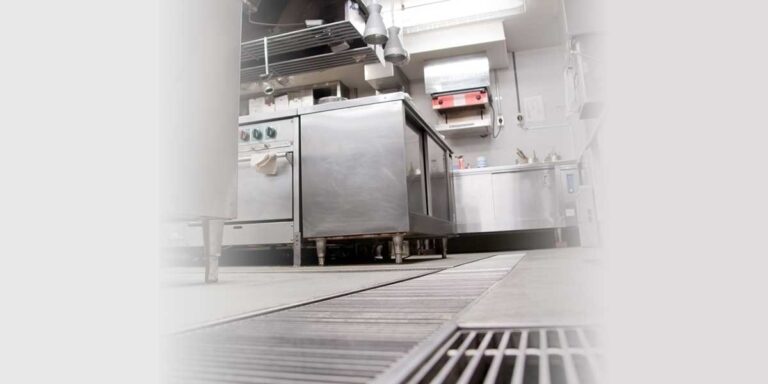It might be easy to fall into the trap of thinking that giving serious consideration to how fats, oils and grease (FOG) are disposed of is reserved for takeaways, greasy spoon cafes, and other establishments serving up deep-fried deliciousness. But, of course, that isn’t the case. The fact is that working with cooking oils, meat, dairy, salad dressing, dough, and many other foodstuffs equals grease. From fish and chip shops to fine dining restaurants, most eateries have the potential to send vast quantities of fats, oils and grease down into the drains where they can do serious damage.
FOG can enter a facility’s plumbing system from a range of sources, including cooking equipment, dishwashing areas and via floor cleaning and equipment sanitation. As a business owner, you must act methodically and with integrity to ensure your restaurant does not impact the local sewerage system. If you don’t, you could end up paying a heavy price –– not only through hefty fines from your local water authority, but also in the mounting expenses that disruption to business can trigger.
But how to dispose of fats, oils and grease responsibly? Although some of these suggestions may seem obvious, it’s surprising how often they are swept under the rug –– or into the drain.
Food scraps should go in the bin
Solids and other nasties from leftover food, when combined with any oil or grease they may contain, can build up in your drains and cause blockages over time. The trick is to stop them from making their way into the drains in the first place. Of the entire FOG control process, solids are the easiest part to control. Work with staff to ensure they know that all food scraps must be scraped into dedicated bins. This includes anything left on plates, but also pans, platters, and utensils –– anything that is washed needs to be carefully scraped before it enters the potwash or dishwashing station. Be sure to give items a quick wipe with a paper towel before running them under the tap.
Better yet, you could do everything in your power to minimise food waste in your establishment, using available insights from your everyday operations to prevent, reduce, reuse and recycle wherever possible. The positive effects of having such reducing food waste will extend far beyond the realms of the water system, making your operation more efficient and helping you tread on the planet a little more lightly.
If your kitchen uses a macerator or food disposal unit, this can contribute to sewer blockages too – especially when the food waste combines with FOG. An alternative onsite solution for food waste disposal is bioremediation. Unlike macerators, which grind food into smaller pieces whilst mixing with water, bio-digesters use microorganisms to digest food into wastewater – safe for drains and sewers. Mechline’s Waste2O has a blend of microorganisms that can digest food and break down any fats, oils and grease that may have made their way into the machine. You should not, however, use either a macerator or bio-digester to directly dispose of fats, oil and grease…
Use a licensed waste contractor to collect oil
Knowing how to dispose of fats, oils and grease in your restaurant is no small challenge; in fact, there is an entire industry built around helping businesses like yours with this specific problem. Your priority should be to collect all quantities of waste oil – for example, the liquid leftover in fryers and oven trays – into dedicated containers.
You should get in touch with a licensed oil collector who can recycle or otherwise dispose of the grease in the most environmentally friendly way possible. In many cases, the oil can be recycled for use in incineration to produce electricity or in biodiesel production.
Install FOG management systems
Ultimately, scraping waste into bins and being careful in how you dispose of grease isn’t enough. For businesses of all shapes and sizes, best practice involves taking a layered approach, installing a combination of technologies and processes in your kitchen to maximise the removal and treatment of FOG that would otherwise enter the drains and sewerage system.
There are a variety of options available to you when it comes to effective FOG management:
Grease traps
British restaurants have relied on grease traps for a long time – they are considered the more traditional solution and often mistaken for being the only one. Made of metal or plastic, grease traps work on the principle that oil and water don’t mix. As oil rises to the top of the grease trap, wastewater will flow out. The grease trap is then emptied, cleaned, and grease collected by licensed waste collectors. For the best results, grease traps should be used in tandem with another solution, like drain dosing, to reduce the frequency of collections needed.
Grease removal units (GRUs)
Grease removal units are a sort of filter which force wastewater to flow more slowly, thus helping FOG to separate from water and float to the top. It may sound quite similar to how a grease trap works, but the key difference is that with GRUs, FOG is removed, either mechanically or hydraulically, and kept in a separate container. This regular removal usually means that the unit itself can be smaller, but the grease still needs to be stored somewhere, and like a grease trap, will require licensed waste collections.
Biological drain dosing systems
Usually housed in a convenient and hygienic wall-mounted unit, biological dosing systems use bacteria to metabolise FOG particles in a process known as bioremediation. Unlike enzyme dosing, which emulsifies FOG, biological dosing degrades FOG into simpler compounds.
Biological dosing systems are connected to the kitchen’s wastewater pipework and can be used in conjunction with grease traps, or as part of a combined system in kitchens, downstream of the source appliance and upstream of the grease trap.
A site evaluation can help you determine the best solution for you and your business.
Whatever path you take, you will want to use a solution that’s easy for your kitchen to maintain, hygienic, and odour-free – as well as cost-effective and efficient. Anything that’s difficult to maintain, is less likely to be maintained, which will cause big issues in your kitchen. This will result in operation downtime and divert your staff’s attention from doing what they do best; serving up delicious food. Regardless of how your establishment is labelled or the type of cuisine you serve, FOG is a universal problem for the catering industry, and it’s important to know how to dispose of it properly.








